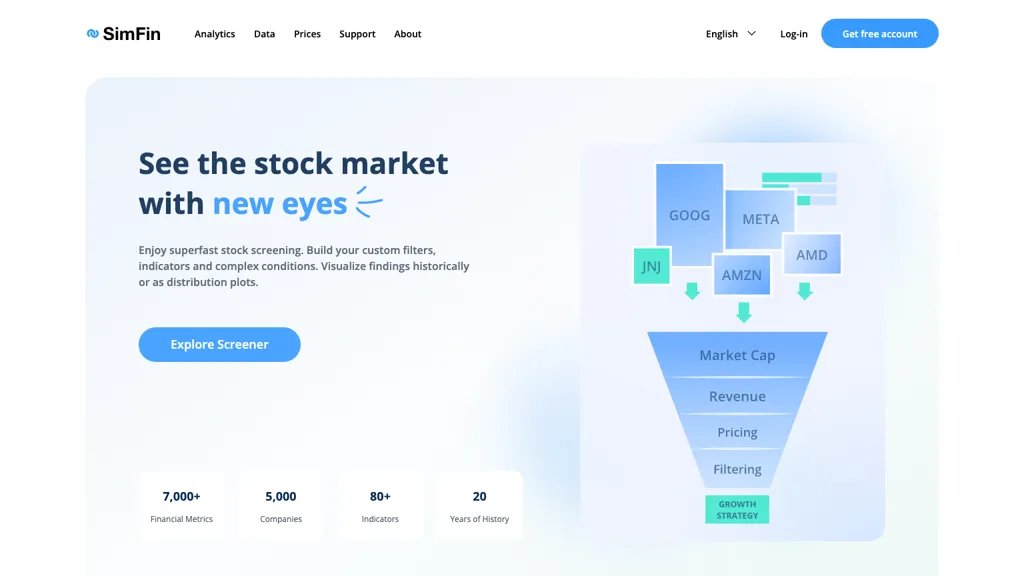20 Great Info On Picking AI Stock Predictions Platform Websites
20 Great Info On Picking AI Stock Predictions Platform Websites
Blog Article
Top 10 Ways To Evaluate The Quality Of Customer Support In Ai Trading Platforms For Stocks
Customer support can be the most important aspect when selecting the right platform to use for AI analysis and prediction of stocks. A responsive and reliable support team can make a big difference in resolving problems, optimizing platform usage, or ensuring a smooth trade experience. Here are 10 top suggestions to analyze the customer support provided by these platforms.
1. Review Support Review Support
24/7 support: Make sure that the platform provides 24/7 support, especially important for global markets and real-time trading.
Business hours: If you don't have support 24/7, make sure that support is accessible for you during business hours.
Make sure there is support available on weekends, holidays or when markets are closed.
2. Test Response Times
Initial response. Send an initial test question to support in order to see how fast they'll be able to respond.
Resolution time: Decide how long you need to deal with issues before they are resolved. Don't just admit their existence.
Live chat: If live chat is available, check the responsiveness and effectiveness.
3. Review the support channels
Multichannel Support: The platform should provide support via a variety of channels (e.g. live chat, email and phone).
Make sure that the support channel is trustworthy.
Self-service solutions are available: Search for a comprehensive FAQ, a forum for community members or a complete knowledgebase that can solve your issues quickly.
4. Evaluation of Quality of Support
Experience: Ensure that the support staff have a an understanding of the platform trading, technical and other issues.
Problem-solving: Evaluate whether support agents are able to effectively solve complex issues or escalate them as needed.
Professionalism - Check if support interactions were courteous, professional and efficient.
5. You should search for account managers who are dedicated to your needs.
Premium support: Verify if premium plans or institutional users have access to account managers.
Account managers that provide proactive and tailored assistance.
Building relationships: Find out if the manager of your account is available and try to establish a relationships with users over time.
Review Documentation
Knowledge base: Ensure that the website has an easily searchable and well-organized information base with tutorials, guides and troubleshooting tips.
Video tutorials: See whether the platform has videos or webinars to help visual learners.
API documentation. API documentation is important for developers.
7. Examining the support of peers and communities
User forums. Check if your platform has an active forum or a user community where you can learn tips and techniques.
Social media groups - Search for unofficial Facebook, LinkedIn, Reddit as well as other social media platforms where members discuss the platforms.
Community engagement - Examine to determine if there's active participation by the staff of the platform in online forums or community discussions.
8. Evaluate Escalation Processes
Escalation of issues Be sure that there is a procedure in place for problem resolution that is escalated to higher levels of support or management.
Follow-up Check to see if support is following up to make sure that the issue has been resolved.
Feedback loop: Verify that the platform is collecting feedback from users in order to improve support services.
9. Test Support During Critical Conditions
Market volatility: Contact assistance during times of high volatility and assess their responsiveness.
Technical issues: You are able to play around with a technical issue (e.g. login problems or data discrepancies) to observe the support team's response.
Trade execution - Check that support is available to assist in urgent trade-related issues (e.g. orders not being executed, delays in execution).
Use User Feedback to improve
Online reviews: Look up user reviews from platforms like copyright or G2 to gauge of the general level of satisfaction of customer service.
Look for case studies and testimonials that focus on positive experiences.
Visit the platform to find out how they handle complaints or negative feedback, as well as support.
Bonus Tips:
Try the platform out during a trial or demo period.
Support for languages: If you're not a native English speaker, check if there is support available in your preferred language.
Onboarding and training. Make sure the platform provides sessions to help new users onboarding or train users.
With these suggestions to evaluate the level of customer service offered by AI stock predicting/analyzing trading platforms Make sure you choose one that offers quick, efficient and efficient assistance. Strong customer support can enhance the overall user experience as well as help you maximize the features offered by the platform. See the recommended best ai trading software blog for blog examples including ai investing app, ai stock picker, ai for investment, best ai stock trading bot free, ai investing app, investing ai, ai stock trading, ai investment app, investment ai, ai for stock trading and more.
Top 10 Tips For Assessing The Scalability Ai Stock Analysing Trading Platforms
Scalability is a key aspect in determining if AI-driven platforms for stock forecasting and trading can handle increasing user demand, volume of data and market complexity. Here are the top 10 tips to determine the scaleability.
1. Evaluate Data Handling Capacity
Tip: Verify that the platform has the capacity to process and analyse large datasets.
Why? Scalable systems have to handle data volumes that are increasing without affecting performance.
2. Test the Real-Time Processing Capabilities of your processor
Test the platform to see how it handles streams of data in real time, such as breaking news or stock price updates.
What is the reason? Trading decisions that are real-time require analysis of data in real-time. In the event of delays, it could result in lost opportunities.
3. Cloud Infrastructure Elasticity and Check
Tip: Find out if the platform can dynamically scale resources, and if it uses cloud infrastructure (e.g. AWS Cloud, Google Cloud, Azure).
Cloud-based platforms are a great way to gain elasticity. They permit the system to scale up or down according to the need.
4. Algorithm Efficiency
Tip 1: Evaluate the computational performance of the AI models that are being utilized (e.g. reinforcement learning deep learning, etc.).
The reason is that complex algorithms are resource-intensive. So optimizing them can help you scale.
5. Learn about parallel processing and distributed computing
Tip: Determine if a platform makes use of parallel processing and distributed computing frameworks.
Why: These technologies enable quicker data processing and analysis across multiple nodes.
Examine API Integration, and Interoperability
Test the platform's ability to integrate external APIs.
The reason: seamless platform integration ensures it can adapt to any new sources of data or trading environments.
7. Analyze User Load Handling
You can simulate the high users and see how the platform reacts.
Why: A platform that is scalable should be able to sustain performance even as the number of users increases.
8. Evaluation of Model Retraining and the Adaptability
Tips: Examine how often and efficiently AI models are being trained with the help of new data.
What's the reason? As markets shift, models must be updated quickly to remain precise.
9. Check for Fault-Tolerance and Redundancy
Tip. Check that your platform has failover systems and redundancy in case of hardware or software problems.
Why? Downtime in trading can be expensive, and fault tolerence is important to allow for the scalability.
10. Monitor Cost Efficiency
TIP: Take into consideration the cost of scaling up your platform. Consider cloud resources such as data storage and computing power.
Why: Scalability must not be at the expense of insufferable costs. It is thus crucial to strike a fair balance between cost and performance.
Bonus Tip: Future-Proofing
Assuring that the platform will be able to handle the latest technology (e.g. advanced NLP, quantum computing) as well as regulatory changes.
By focusing your focus on these factors it is possible to accurately evaluate the scalability AI prediction and trading platforms. This will ensure that they are robust and efficient and also well-equipped for future growth. Take a look at the top rated discover more for ai stock investing for site examples including best ai penny stocks, best ai stocks, best ai stocks to buy now, free ai tool for stock market india, how to use ai for copyright trading, ai tools for trading, how to use ai for stock trading, ai stock predictions, ai investment tools, can ai predict stock market and more.